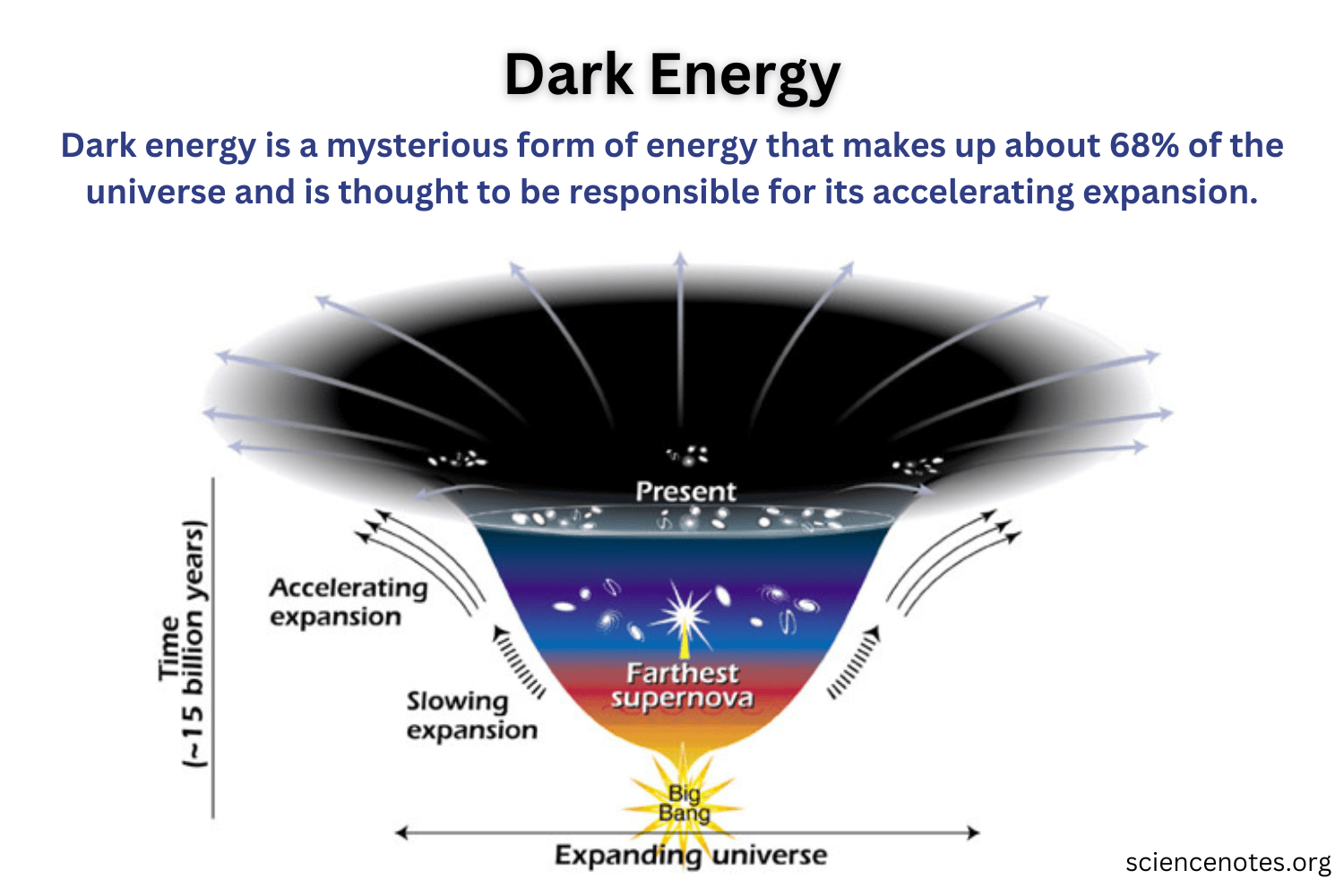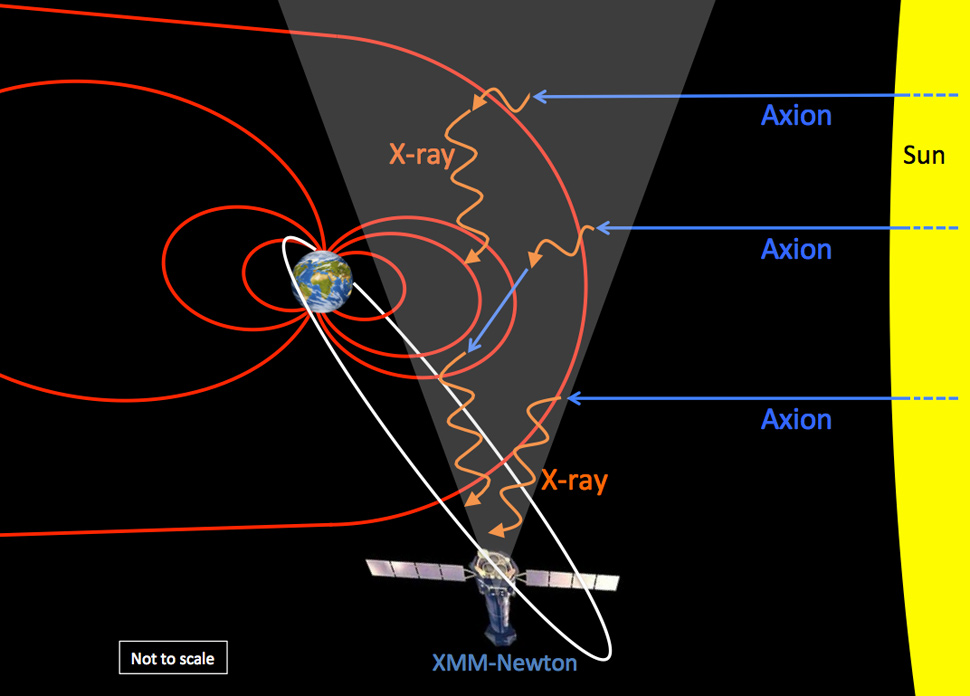
Dark Energy Analysis: Questions About Our Universe’s Future
Dark energy is a mysterious force that plays a crucial role in the cosmic expansion of our universe. Recent research, particularly from the Dark Energy Spectroscopic Instrument (DESI) collaboration, has revealed insights that challenge our understanding of universe evolution. As scientists delve deeper into dark energy analysis, they are beginning to uncover evidence that this force may not be as constant as once thought. This evolving knowledge significantly impacts astrophysics research, prompting new theories about how matter and dark energy interact to drive the universe’s accelerated expansion. With the largest 3D map of the universe at their disposal, researchers are now equipped to explore the complexities surrounding dark energy and its implications for the fate of our cosmos.
Exploring the enigma of dark energy invites us to reconsider how we frame the dynamics of the universe. Often referred to as the elusive force behind the cosmic acceleration, dark energy represents an integral aspect of our understanding of universal mechanics. Insights from recent astrophysical studies shed light on its role in shaping the structural fabric of space-time and the distribution of matter across the cosmos. As collaborations like DESI embark on ambitious projects to map our universe, they contribute invaluable information to this broad field of research. Not only does this enhance our comprehension of cosmic expansion, but it also enriches our grasp of the intricate processes governing the evolution of galaxies and the universe at large.
Understanding Dark Energy and Cosmic Expansion
Dark energy plays a crucial role in our understanding of cosmic expansion and the universe’s evolution. It is the mysterious force that appears to be accelerating the expansion of the universe, countering the effects of gravity. By studying dark energy, astrophysicists can gain insights into not just the current state of our universe, but also its ultimate fate. The tension between matter and dark energy highlights the delicate balance that determines the evolution of cosmic structures over billions of years.
Recent studies, particularly involving the Dark Energy Spectroscopic Instrument (DESI), have provided fresh insights into dark energy’s properties and behavior. The findings suggest that dark energy may not be static, as previously thought, but might actually weaken over time. This groundbreaking revelation necessitates a reassessment of existing cosmological models and raises intriguing questions about how dark energy interacts with the fabric of space-time during cosmic evolution.
As researchers delve deeper into dark energy analysis, its implications stretch far and wide. With DESI capturing data from over 14 million galaxies and quasars, scientists can now measure its effects over an expansive history of 11 billion years. Such extensive dark energy analyses could reshape our understanding of the universe and challenge longstanding notions about the stability of cosmic constants.
Furthermore, understanding dark energy’s influence could yield answers to profound questions about the universe’s fate. Will it continue to expand indefinitely, or will the forces of gravity eventually pull everything back together? These questions lie at the core of astrophysics research, as discoveries in dark energy continue to evolve and inspire new lines of inquiry in the field.
The Role of DESI Collaboration in Astrophysics Research
The Dark Energy Spectroscopic Instrument (DESI) collaboration represents an unprecedented global effort in astrophysics research. Comprising over 900 researchers from more than 70 institutions, DESI is at the forefront of mapping the universe with remarkable precision. The collaboration’s efforts are pivotal in analyzing dark energy and understanding how it affects cosmic structures. This type of collaborative research showcases the importance of pooling expertise and resources to tackle the complex mysteries of the universe’s evolution.
With the DESI survey gathering extraordinary data, researchers are not only focusing on dark energy but also examining galaxy evolution and the cosmic web. The massive dataset compiled includes an extensive catalog of celestial objects, which researchers are using to explore various aspects of astrophysics. The collaboration’s findings, coupled with innovative algorithms and simulations, are expected to provide critical insights into how the universe has changed over time.
The success of the DESI project underscores the importance of international collaboration and information sharing in the scientific community. As findings are shared through platforms like arXiv, other researchers can build upon this work, creating a domino effect that propels the field forward. This spirit of collaboration fosters an environment where new ideas can flourish and promote a deeper understanding of astrophysics.
Moreover, the ongoing analysis from the DESI collaboration enables astronomers to continually refine their understanding of the universe. As they utilize advanced technology and methodologies to interpret complex data, each discovery adds a piece to the puzzle of cosmic knowledge. The journey that started with DESI is only beginning, and its implications for future astrophysical research are immense.
Baryon Acoustic Oscillations: The Cosmic Ruler
Baryon Acoustic Oscillations (BAOs) are critical to understanding the expansion of the universe and the influence of dark energy. These oscillations are the result of sound waves in the early universe, creating a pattern that can be recognized in the distribution of galaxies. BAOs serve as a cosmic ruler, allowing researchers to measure distances in the universe and assess how structures have evolved over billions of years. By analyzing these oscillations, scientists can directly gauge the influence of dark energy during different epochs of cosmic expansion.
The utilization of BAOs in the DESI study provides a powerful tool for understanding the dynamics of cosmic expansion. The size of the acoustic peaks is directly correlated with the expansion rate, enabling astrophysicists to track how dark energy has shaped the universe over time. This method of measurement adds depth to the analysis, revealing how the characteristics of dark energy might change depending on the epoch being studied. As DESI continues to expand our 3D mappings of the universe, the insights gained from BAOs will further illuminate our understanding of cosmic history, providing a clearer view of dark energy’s role.
In conclusion, BAOs not only act as a cornerstone in measuring cosmic distances but also represent an ongoing dialogue between observational evidence and theoretical models in astrophysics. The intricate details of BAOs have the potential to shed light on the enigmatic properties of dark energy and its evolution. As researchers dissect this data, they unlock the secrets of the universe’s past and pave the way for future discoveries.
As DESI forges ahead in its mission, the continued study of Baryon Acoustic Oscillations will be essential in developing a more comprehensive picture of how the universe operates. With each new layer of insight, researchers are one step closer to unraveling the mysteries of dark energy and the fate of our universe.
Implications of Dark Energy Analysis on the Future of the Universe
The implications of dark energy analysis are profound, fundamentally affecting our understanding of the universe’s fate. As research from collaborations like DESI reveals potential changes in dark energy’s characteristics, it compels astrophysicists to reconsider the future trajectory of cosmic expansion. If dark energy continues to weaken, the universe might shift from its current accelerating expansion into a period of deceleration, leading to significant consequences for its ultimate destiny.
Such revelations could alter our understanding of cosmic phenomena, prompting scientists to refine existing models and formulate new hypotheses. The delicate interplay between matter and dark energy not only influences the formation of galaxies and large-scale structures but also determines whether the universe will continue expanding indefinitely or undergo eventual collapse.
As researchers strive to understand the implications of these findings, the significance of dark energy analysis becomes ever clearer. Investigating the evolution of dark energy serves as a gateway to understanding various astrophysical processes, from galaxy formation to the cosmic microwave background. This knowledge contributes to a broader comprehension of the universe and its fundamental principles.
Furthermore, insights derived from dark energy analysis could have implications beyond theoretical astrophysics. They might inform cosmological methodologies, enhancing space exploration capabilities and guiding future astronomical observations. This awareness highlights the interconnected nature of modern scientific research, where discoveries in one field can impact numerous others.
The Future of Astrophysics Research Amid Dark Energy Discoveries
As discoveries in dark energy continue to emerge, the future of astrophysics research holds great promise. The advancements stemming from projects like DESI are paving the way for a deeper understanding of the universe, with researchers equipped to tackle pressing questions regarding cosmic expansion and the nature of dark energy itself. The comprehensive datasets produced allow for richer analyses and more accurate modeling of the universe’s behavior, enabling the scientific community to make strides in both observational and theoretical astrophysics.
The extensiveness of collaborations and the integration of advanced technology are crucial to the evolution of research methodologies in this field. As astronomers harness tools that enhance the precision of their measurements, the insights gained can drive new advancements in cosmology. Furthermore, this fosters an environment ripe for interdisciplinary collaboration, wherein techniques and knowledge are shared across scientific disciplines, fueling innovations that may reshape our understanding of fundamental cosmic phenomena.
Looking to the future, the emphasis on dark energy and its complexities will likely lead to a broader re-evaluation of established theories in cosmology. Researchers will be driven to refine their models, ensuring that they remain prepared to embrace new data that challenges conventional understanding. As they do so, the pursuit of knowledge in astrophysics will only deepen, offering humanity an unending glimpse into the mysteries of the universe.
Ultimately, the ongoing investigations into dark energy and cosmic expansion affirm the spirit of exploration endemic to science. With each revelation, we not only gain knowledge about our own universe but also inspire the next generation of researchers who will continue to seek answers to profound questions about existence.
Exploring Galaxy Evolution Through DESI Findings
The findings from the DESI collaboration extend beyond dark energy analysis; they provide crucial insights into galaxy evolution, a fundamental aspect of cosmology. The expansive 3D map of the universe produced by DESI allows researchers to investigate the formation and structure of galaxies over time. By understanding how galaxies evolve in response to cosmic forces, scientists can draw correlations between dark energy and the growth patterns of galaxies.
Each galaxy’s evolution is shaped by a complex interplay of dark energy, gravitational forces, and other cosmic elements. The data collected through DESI not only documents the current state of these galaxies but also tracks their developmental trajectories, shedding light on how they react to changes in dark energy. As researchers analyze these patterns, they can gain valuable information about the universe’s overall structure and its dynamic behavior.
Moreover, this pursuit toward understanding galaxy evolution encourages further investigation into the nature of the cosmic web, the vast structure that connects galaxies across the universe. The intricate relationship between galaxies and dark energy allows researchers to develop models that encapsulate the essential qualities of cosmic evolution.
As scientists uncover more about how galaxies have evolved in tandem with dark energy, they are better equipped to answer fundamental questions about the forces that shape our universe. The research inspired by DESI’s findings is an ongoing journey that deepens our grasp of cosmology, providing insight that reaches far beyond the immediate galaxy formations to encompass the entire universe.
The Importance of Public Outreach in Astrophysics Research
The DESI collaboration not only focuses on groundbreaking astrophysical research but also emphasizes the importance of public outreach in science. Engaging the public in understanding complex concepts such as dark energy and cosmic expansion fosters a sense of community around scientific inquiry. The collaboration’s dedication to creating educational resources and visual materials enhances public awareness, sparking curiosity and interest in astrophysics.
As researchers present their findings at conferences and share their discoveries online, they invite individuals from diverse backgrounds to participate in the conversation about the universe’s evolution. This outreach strives to demystify complex scientific terminology and ensure that information is accessible to all. By fostering connections with the public, researchers also inspire future generations of scientists, paving the way for continued exploration of the cosmos.
Furthermore, public engagement creates a feedback loop that can inform research directions. As the public expresses interest in specific topics, researchers can tailor their investigations toward those areas, ensuring that the science is relevant and impactful. This partnership between scientists and the public ultimately enhances the dynamism of astrophysics research as a whole.
Through effective outreach, the DESI collaboration demonstrates that the pursuit of knowledge should not exist in a vacuum; rather, it thrives when shared with the broader community. By inviting curiosity and promoting understanding, researchers celebrate the wonders of the universe and the human spirit’s relentless desire to explore.
Utilizing Cosmic Data to Advance Astrophysical Research
The vast amounts of cosmic data generated by the DESI collaboration are invaluable for advancing astrophysical research. With its extensive mapping of galaxies and determination of dark energy’s influence over billions of years, this dataset empowers scientists to conduct thorough analyses that were previously unattainable. By leveraging the detailed information on millions of celestial objects, researchers can develop new frameworks for understanding the universe’s evolution.
The analysis of such rich data allows researchers to refine existing theories, explore unanswered questions, and develop predictions for future cosmic phenomena. The large-scale data can reveal patterns and correlations that contribute to the understanding of dark energy, cosmic structure, and the dynamics of galaxy formation. This transformative shift in accessing and analyzing astronomical data signals a new era of astrophysics, where big data reigns supreme.
Moreover, the opportunities presented by this monumental dataset also open pathways for interdisciplinary collaboration, encouraging experts from different fields to utilize the information in innovative ways. The interplay of data science, machine learning, and astrophysics has the potential to unveil mysteries that remain hidden, driving profound advancements in our understanding of the universe.
As DESI continues its cosmic survey, the ongoing interrogation of this data will be imperative for validating hypotheses and challenging assumptions about dark energy and its complex relationship with cosmic expansion. Utilizing cosmic data effectively ensures that astrophysical research remains robust, relevant, and aligned with the evolving nature of our understanding of the universe.
Frequently Asked Questions
What is dark energy and how does it affect cosmic expansion?
Dark energy is a mysterious force that constitutes about 68% of the universe and is believed to be responsible for its accelerating expansion. It acts as a repulsive force countering gravity, influencing the dynamics of cosmic expansion and shaping the evolution of the universe.
How does the DESI collaboration contribute to our understanding of dark energy?
The Dark Energy Spectroscopic Instrument (DESI) collaboration plays a vital role in analyzing dark energy by mapping the large-scale structure of the universe. By studying the distribution of galaxies and quasars, DESI provides critical data that helps researchers understand how dark energy influences the expansion of the universe over billions of years.
What recent findings have emerged from the DESI dark energy analysis?
Recent findings from the DESI dark energy analysis suggest that the effects of dark energy may be weakening over time, challenging previous assumptions that it remains constant. This emerging evidence indicates that our understanding of the universe’s evolution and the interactions between matter and dark energy could require significant revisions.
How does dark energy analysis relate to the evolution of the universe?
Dark energy analysis is crucial for understanding the evolution of the universe as it helps astronomers determine how the universe’s expansion rate has changed over time. By using tools like Baryon Acoustic Oscillations, researchers can track the impact of dark energy on cosmic evolution and refine models predicting the universe’s future trajectory.
In what ways are physicists using DESI data for astrophysics research?
Physicists are utilizing DESI data for various astrophysics research endeavors, including studying galaxy evolution, mapping the cosmic web, and examining the structure of the Milky Way. The extensive dataset from DESI enables researchers to gain deeper insights into the role of dark energy in shaping the universe.
What implications do DESI findings have on our future understanding of dark energy?
DESI findings imply that dark energy may not be a constant force but rather an evolving element that influences the universe’s fate. This realization necessitates a reevaluation of existing cosmological models and encourages further investigations into the fundamental nature of dark energy and its role in cosmic expansion.
Why is dark energy considered a critical component of astrophysics research?
Dark energy is considered critical in astrophysics research because it accounts for the majority of the universe’s energy density and affects the universe’s large-scale structure and future evolution. Understanding dark energy is essential for resolving fundamental questions about the universe’s fate, its expansion, and the nature of cosmic evolution.
| Key Point | Details |
|---|---|
| Collaboration | International Dark Energy Spectroscopic Instrument (DESI) collaboration, including researchers from Harvard. |
| Dark Energy’s Nature | Traditionally thought to be a constant, recent findings suggest it may be weakening over time. |
| Universe Expansion | Dark energy is believed to be driving the accelerating expansion of the universe. |
| Research Methodology | Utilized the largest 3D map of the universe to assess dark energy’s influence over the past 11 billion years. |
| Baryon Acoustic Oscillations | Subtle traces of early universe events help in measuring dark energy’s strength over time. |
| Key Researchers | Led by Harvard Professor Daniel Eisenstein, with contributions from multiple researchers on various analyses. |
| Public Engagement | DESI’s Data Release 1 includes accessible data for public exploration and astrophysical research. |
| Continuous Observation | The DESI survey persists nightly, enhancing the cosmic map and improving understanding of the universe. |
Summary
Dark energy plays a critical role in our understanding of the universe’s fate and expansion. Recent findings from the DESI collaboration indicate that dark energy may not be constant but is evolving, necessitating a re-evaluation of existing cosmological models. These discoveries are crucial as they shed light on the underlying mechanisms driving the universe’s acceleration and hint at a more dynamic cosmic landscape than previously understood.



